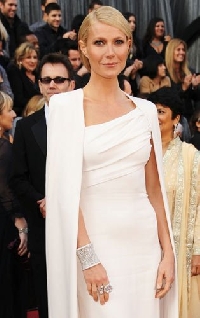
Wearing white after Labor Day is no longer a fashion trangression
It used to be a huge transgression and unforgivable fashion faux pas to wear white after Labor Day.
Did you see the movie Serial Mom where Kathleen Turner offed juror number 8 (Patricia Hearst) because she was wearing white shoes after Labor Day? Wearing white after Labor Day is no longer grounds for ? homicide. The rules have changed.
And even if you aren?t one to follow fashion rules, if the no-white dictate was crammed into your head by a mother who believed in these rules it?s a little hard to shake them.
Before the arrival of air conditioning, many people wore light colored clothing during the summer because it was cooler than dark clothing.
When summer was over, which the first weekend in September designates each year, the light clothing and shoes were put away and darker items were deemed more appropriate for the autumn and winter months.
Additionally, it is believed that the old money people thought it their duty to school the nouveau riche (newly rich) in the art of dressing properly. Fashion protocol was considered very important by this group. Gaffes were not tolerated. In the 1950s, when Dwight D. Eisenhower was the president, his wife Mamie was the epitome of the stylish (albeit matronly) society woman.
It was during this period that the ban on white shoes after the first September Monday really escalated and took hold. Fitting in, conforming and, apparently, doing housework while outfitted in a dress and high heels became the norm.
~
Nowadays, the color white is frequently worn during the cold weather months. The shade worn in winter is referred to as “winter white” and it is beautiful. It isn?t exactly a pure color; it?s an ivory, cream or off-shade.
Although this color is acceptable during the winter, you might want to reconsider wearing dark stockings with light shoes, regardless of the season. This is a bizarre look and the result is an unbalanced appearance.
Generally speaking, hose should match or come close to the color of the shoes that are worn. This elongates the leg and there is no obvious line of demarcation between the shoes and the leg. When you contrast the color of your shoes and your legs (e.g., pale shoes with dark stockings or dark shoes with very light opaque stockings) the result is that the wearer is going to look shorter and chunkier.
OTHER FASHION RULES THAT YOU CAN BREAK
Other fashion dictates that you have may have heard, and are free to break, include only wearing velvet during fall and winter. Obviously, velvet is a warm material so from the standpoint you probably don?t want to get gussied up in a velvet dress for a summer wedding but aside from the heat factor you can wear it whenever you want to but you may want to limit it to a jacket rather than an entire velvet ensemble.
Suede shoes: Wear them whenever you want to, although traditional fashionistas may insist that suede is for fall and winter.
HOSE VERSUS BARE LEGS
Older woman have been raised wearing hose and it?s hard to break that habit. Many of them don?t want to go bare legged because women of a certain age are not going to have toned, sculpted, fabulous legs.
Additionally, many are boasting ghostly white legs, because they?re avoiding the sun and suntan beds. Of course there is always self tanner, which sometimes works and sometimes doesn?t. If you want to wear hose, wear them. If you want to go bare-legged, do it. If you are wearing opened toed sandals purchase hose that are toe-less.
IT’S UP TO YOU
If you want to wear white after Labor Day, feel free to do so. If you are bound by the fashion rules that your mother imparted, then don’t wear it in the fall and winter. It’s your choice.
